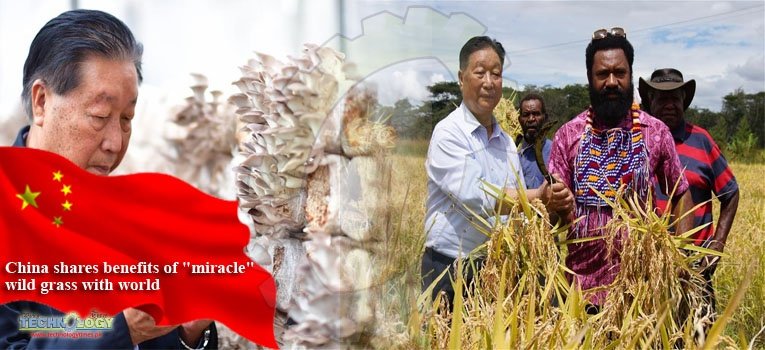Small is the new big. A group of wild grass is China’s contribution to the world’s sustainable development, and its multiple uses are shared with 105 countries to help tackle food issues and desertification.

China on Friday signed an aid project with Papua New Guinea using the grass technology, one day ahead of the Asia-Pacific Economic Cooperation (APEC) Leaders’ Meeting scheduled to be held in the Pacific island country. It is also China’s 12th international aid program in poverty relief using the grass.
Known in China as Juncao (meaning “the herbal plant for growing edible mushrooms”), the grass has worked miracles for Chinese scientists who are cultivating it as a substrate for growing edible and medicinal mushroom or forage for livestock, as well as using it as green barrier to stop sand dunes from moving.
The grass is not new to Papua New Guinea. China introduced the grass and its cultivation technology to the country over 20 years ago to help local farmers raise livestock and grow edible mushrooms.
In 2017, the yield of the grass in Papua New Guinea set a world record of 854 tonnes per hectare. The grass grows up to 8 meters tall and is harvested three to six times a year. It contains 11 percent to 17 percent crude protein. The per-hectare harvest of the grass can feed 400-500 sheep or grow 100 tonnes of fresh fungi.
“We hope the newly inked agreement will help double the agricultural production capacity and farmers’ incomes in the Eastern Highlands Province of Papua New Guinea,” said Lin Zhanxi, a 76-year-old professor with the Fujian Agriculture and Forestry University (FAFU) and the chief scientist for grass development.
The aid program is expected to help lift 30,000 people out of poverty in the province by 2023.